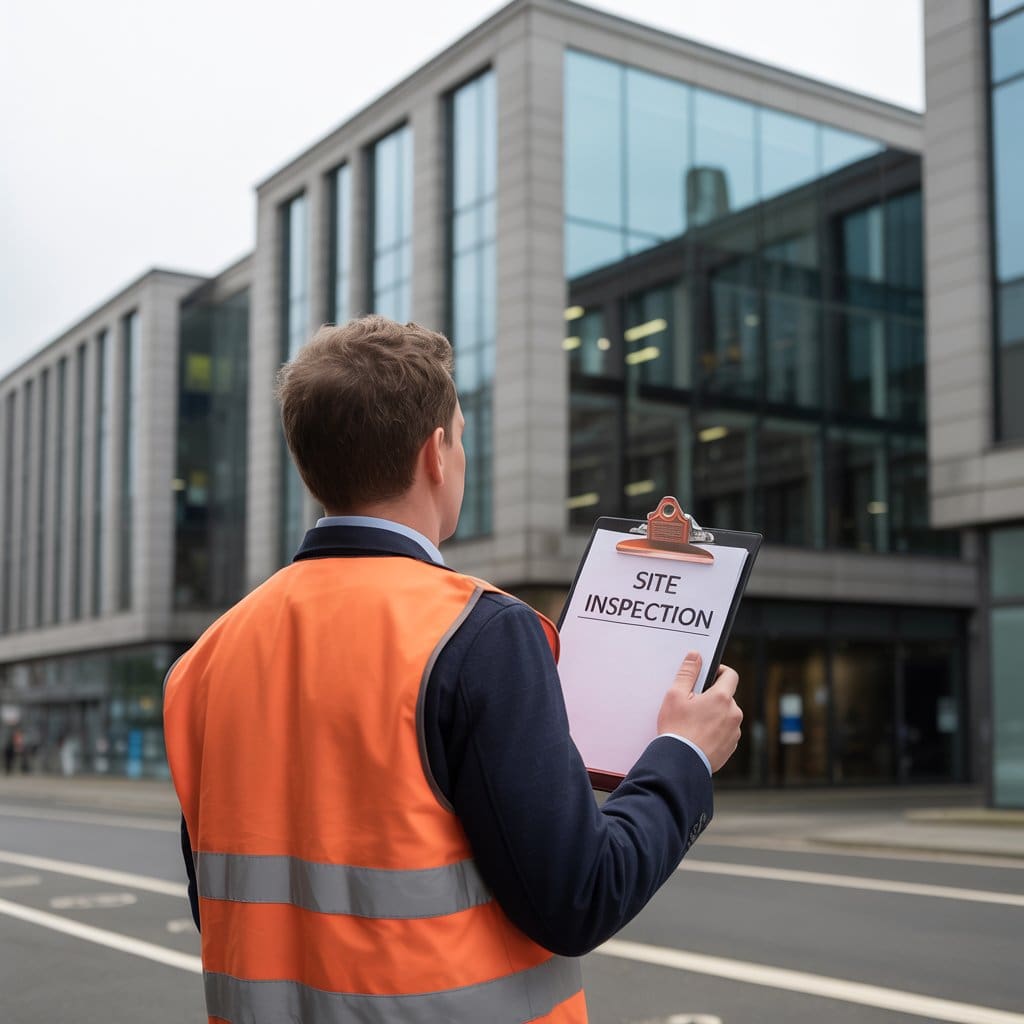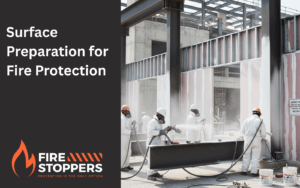Effective fire emergency response depends on comprehensive pre-planning and preparation. Fire incidents require immediate, coordinated action from both building occupants and emergency services to minimise casualties and property damage.
Fire Safety Statistics in Ireland
Irish Fire Safety Statistics (2019-2023)
Critical Risk Factors
- Male victims represent 65% of fire fatalities
- 55% of incidents occur in rural locations
- Median age of fire fatality victims is 65 years
- Early detection systems critical for elderly protection
Current data indicates that 59% of fire fatalities between 2019 and 2023 involved individuals over 65 years of age. These statistics demonstrate the critical importance of robust fire safety planning, particularly for vulnerable populations.
The 1981 Stardust fire in Dublin, which resulted in 48 fatalities and over 200 injuries, highlighted significant deficiencies in fire safety planning and led to comprehensive reforms in Irish fire safety legislation. This tragedy underscored the vital role of passive fire prevention measures and proper emergency response protocols.
Pre-fire planning represents a fundamental component of fire safety compliance, mandated under Irish fire safety legislation and essential for protecting building occupants and property. Effective planning integrates multiple protection strategies, including fire stopping solutions and structural steel fire protection.
This guide provides comprehensive information on developing effective pre-fire plans in compliance with Irish fire safety legislation. It covers proper pre-fire planning methodologies, property protection strategies, and emergency response coordination procedures. The guidance is applicable for building owners, safety managers, and emergency services professionals implementing fire protection strategies using established methods and modern technology integration while meeting Irish regulatory requirements.
Our comprehensive fire safety services include passive fire safety audits to assess current protection levels, fire door upgrades to ensure compartmentalisation integrity, and fire damper testing and inspection to maintain mechanical fire protection systems. Additionally, intumescent coatings provide critical protection for structural elements, while specialized industrial painting and coatings offer enhanced fire resistance for industrial applications.
Table of Contents
- Fire Safety Statistics in Ireland
- What is a Pre-Fire Plan and Why Does Every Irish Building Need One?
- Emergency Response Time Reduction Through Pre-Fire Planning
- What Are the Essential Components of Fire Protection Systems Under Irish Standards?
- How to Conduct a Comprehensive Fire Risk Assessment in Ireland?
- Fire Preparedness and Occupant Safety
- Which Fire Protection Equipment Should Every Irish Building Have?
- How Do Irish Emergency Services Use Pre-Fire Plans During Incidents?
- What Are the Legal Requirements for Fire Safety Compliance in Ireland?
- How to Create Effective Emergency Response Procedures?
- What Makes a Pre-Fire Plan Truly Effective in Real Emergencies?
- Risk Factors and Preventive Measures
- Key Takeaways: Essential Elements of Effective Pre-Fire Planning in Ireland
- Additional Irish Resources
- Emergency Contact Information

What is a Pre-Fire Plan and Why Does Every Irish Building Need One?
A pre-fire plan is your building’s safety blueprint.
It’s a detailed document that provides critical information about your building’s layout, fire protection systems, and emergency procedures. Under the Fire Services Acts 1981 & 2003, this essential safety tool helps firefighters and emergency responders understand your premises before they arrive on scene.
The Irish Context Makes This Crucial
Every building presents unique challenges during fire emergencies. This is particularly true in Ireland where many structures combine modern construction with historic elements.
The pre-fire plan identifies these challenges in advance:
- Maps out fire hazards
- Shows the location of fire protection equipment compliant with Irish Standards
- Details the building’s occupancy patterns
- Provides critical information when every second matters
Multiple Legal and Practical Benefits
The document serves purposes beyond emergency response:
For Building Owners:
- Ensures compliance with Building Regulations Part B (Fire)
- Identifies potential fire hazards before they become problems
- Demonstrates due diligence for insurance purposes
For Safety Managers:
- Provides framework for staff training
- Enables conduct of fire drills in accordance with Health and Safety Authority (HSA) guidelines
- Creates systematic approach to emergency preparedness
For Insurance Companies:
- Allows accurate risk assessment
- Determines appropriate coverage rates
- Demonstrates commitment to risk management
A well-prepared pre-fire plan demonstrates commitment to occupant safety and property protection whilst fulfilling legal obligations under Irish fire safety legislation.
Emergency Response Time Reduction Through Pre-Fire Planning
Fire Response Time Impact Calculator
See how pre-fire planning affects emergency outcomes
- Floor plans enable immediate tactical deployment
- System locations reduce setup time by 3-5 minutes
- Hazard identification improves firefighter safety
- Utility information prevents service delays
Response time during fire emergencies directly correlates with casualty rates and property damage. Comprehensive pre-fire planning provides emergency responders with immediate access to critical building information, eliminating assessment time and enabling rapid tactical deployment.
Emergency responders from county and city fire services regularly encounter unfamiliar building configurations. Without pre-fire documentation, firefighters must conduct on-site assessments to determine building layout, utility locations, and system configurations. This assessment period can extend response time by several minutes, during which fire spread may compromise containment efforts.
Pre-fire plans provide emergency services with essential information including floor plans compliant with Irish Building Regulations, optimal access routes, fire suppression system locations meeting IS 3218 standards, and hazardous material storage details. This information enables immediate deployment of appropriate resources and tactical approaches.
Modern Irish fire services utilise digital systems that transmit building-specific information directly to responding units via mobile devices. These systems provide real-time updates on fire alarm activations, building occupancy levels, and system status changes as required by National Directorate for Fire and Emergency Management (NDFEM) protocols.
What Are the Essential Components of Fire Protection Systems Under Irish Standards?
Modern fire protection systems in Ireland must combine multiple elements to detect, suppress, and contain fires whilst complying with Irish Standards and Building Regulations Part B.
Understanding these components is crucial for effective pre-fire planning and overall fire safety compliance.
Fire Detection Systems: Your First Line of Defence
Fire detection systems form the first line of defence and must comply with IS 3218 (Fire Detection and Alarm Systems for Buildings).
Key Components Include:
- Smoke detectors
- Heat sensors
- Fire alarm systems that alert occupants and emergency services
Modern smart detection systems can differentiate between cooking smoke and actual fires, reducing false alarms by up to 90%.
Why This Matters: Early detection allows more time for evacuation and gives Irish fire authorities advance notice of the emergency. The pre-fire plan should detail the location and type of all detection equipment, ensuring compliance with Health and Safety Authority workplace safety requirements.
Fire Suppression Systems: Active Protection
Fire suppression systems provide active protection against flames and smoke.
Traditional Systems: Traditional sprinkler systems remain the most common suppression method, using water to control fire spread.
Advanced Integration: Cutting-edge systems now integrate with building automation platforms, automatically:
- Adjusting ventilation
- Unlocking doors
- Transmitting real-time data to county fire services
Specialised Solutions: Specialised systems use chemicals or gases for areas where water might damage equipment or prove ineffective. The plan must document all suppression systems, including water sources, control valves, and system limitations, ensuring compliance with relevant Irish Standards.
Passive Fire Protection: Built-in Safety
Built-in fire protection features include passive elements like fire-rated walls, doors, and barriers that must meet Building Regulations Part B requirements. Professional passive fire protection services ensure these systems are properly installed and maintained.
These components help contain fires, protect escape routes, and work with advanced ventilation systems to remove smoke and heat while preventing fire spread through HVAC systems.
The pre-fire plan should map all these protective features to help Irish emergency responders understand the building’s defensive capabilities and structural fire resistance ratings.

How to Conduct a Comprehensive Fire Risk Assessment in Ireland?
A thorough fire risk assessment forms the foundation of any effective pre-fire plan.
It’s also a legal requirement under Irish health and safety legislation. This systematic evaluation identifies potential fire hazards and evaluates the adequacy of existing fire protection measures in compliance with HSA guidelines.
Professional Assessment Requirements
The assessment begins with a detailed site visit conducted by qualified professionals familiar with Irish fire safety regulations.
What Inspectors Examine: Inspectors follow standardised protocols established by the NDFEM, examining areas for:
- Faulty electrical systems
- Improper storage of combustible materials
- Blocked emergency exits
They evaluate the condition of fire protection equipment, ensuring:
- Extinguishers maintain IS 291 standards
- Alarms comply with IS 3218
- Suppression systems function properly
A comprehensive fire safety survey follows established Irish protocols to ensure nothing gets overlooked and all Building Regulations Part B requirements are met.
Occupancy and Risk Factors
Occupancy patterns significantly impact fire risk assessment in Irish buildings.
Buildings with high occupant density require different safety measures than those with minimal staffing. The assessment considers:
- Peak occupancy times
- Evacuation capabilities
- Mobility of building users
Special attention to compliance with Irish equality legislation regarding accessibility.
High-Risk Areas: Special attention goes to areas where occupants might need assistance during emergencies:
- Healthcare facilities
- Schools
- Care homes
Ensuring compliance with sector-specific HSA guidelines.

Hazardous Materials Assessment
Fire incidents in Irish residential properties (2019-2023) show that chimney fires represent 37% of incidents where the cause was determined. Hazardous materials assessments must address unique risks under Irish health and safety legislation.
Assessment protocols must identify all hazardous substances, storage locations, and handling procedures in accordance with HSA requirements. This information is essential for Irish emergency responders who must understand potential chemical reactions or explosion risks during incident response.
The evaluation must also consider how hazardous materials might affect evacuation routes and firefighting tactics employed by local fire authorities.
Fire Preparedness and Occupant Safety
Fire preparedness training directly impacts evacuation success rates and casualty outcomes during building emergencies. Irish workplace safety legislation mandates comprehensive fire preparedness programmes for all commercial and multi-occupancy buildings.
Statistical Context
Analysis of fire fatalities in the Republic of Ireland (2014-2016) indicates that 65% of victims were male, with 52% aged 65 or older. The majority of incidents (92%) occurred in private dwellings, with 55% in rural locations. Notably, 69% of victims were alone at the time of the incident, highlighting the importance of early detection and rapid response systems.
Training Requirements
Fire safety training must comply with Health and Safety Authority (HSA) workplace safety guidelines. Regular fire drills familiarise occupants with evacuation procedures and emergency protocols, ensuring effective response during actual emergencies.
Pre-fire plans must specify training schedules, drill coordination responsibilities, and compliance with Irish employment law. Training programmes must accommodate diverse workforces, including non-English speakers and temporary personnel.
Communication Systems
Emergency communication systems must comply with Irish equality legislation, ensuring accessibility for all building occupants. Evacuation procedures must be clearly posted throughout buildings, with multilingual signage provided where required.
Emergency plans must account for all occupants, including visitors unfamiliar with building layouts. Designated staff members must be trained to assist others during evacuations and coordinate with emergency services, fulfilling duty of care obligations under Irish law.

Which Fire Protection Equipment Should Every Irish Building Have?
Essential fire protection equipment varies by building type and occupancy.
However, certain items are universal requirements for basic fire safety compliance with Irish Standards and Building Regulations.
Fire Extinguishers and Standards
Fire extinguishers provide the first line of defence against small fires and must comply with IS 291 (Maintenance of Portable Fire Extinguishers). Different types handle specific fire classes: water for ordinary combustibles, foam for flammable liquids, and dry chemical for electrical fires.
Regular inspection and maintenance by qualified fire safety professionals keep this equipment ready for use whilst ensuring compliance with Irish health and safety requirements. Annual servicing by certified technicians maintains warranty coverage and legal compliance.
Fire Alarm Systems
Fire alarm systems alert occupants to danger and summon emergency services via 999 or 112.
Modern systems installed to IS 3218 standards can:
- Differentiate between smoke types
- Reduce false alarms that might cause occupants to ignore real emergencies
Advanced Integration: Integration with building automation systems can:
- Trigger ventilation changes
- Unlock doors
- Provide county fire services with real-time information about fire location and spread
As required by NDFEM protocols.
Specialised Equipment
Specialised firefighting equipment may be required for certain occupancies under Irish fire safety regulations. Commercial kitchens need suppression systems designed for grease fires, computer rooms might require clean agent systems that won’t damage sensitive equipment, and industrial facilities may need foam systems for flammable liquid protection.
Professional fire protection consultants can assess specific requirements for your building type and occupancy. The pre-fire plan should document all specialised equipment and provide operating instructions for Irish emergency responders, ensuring compatibility with local fire authority equipment and procedures.
How Do Irish Emergency Services Use Pre-Fire Plans During Incidents?
Irish emergency services rely on pre-fire plans to make rapid decisions during fire incidents.
These documents provide crucial information that affects tactical decisions and resource deployment by county and city fire authorities.
Digital Integration with Irish Fire Services
Modern emergency response has evolved significantly with digital integration across Irish fire authorities.
Mobile Technology Revolution: Mobile devices allow incident commanders to view:
- Floor plans
- System locations
- Hazard information while en route to emergencies
This transforms how firefighters prepare for building entries.
Response Coordination: The apparatus responding to a fire emergency carries copies of relevant pre-fire plans. Command vehicles use this information to:
- Establish incident command
- Coordinate response efforts with other emergency services including Gardaí and ambulance services
Tactical Decision Support
Specific building information guides tactical decisions made by Irish fire service personnel.
Critical Information Includes:
- Structural features that might affect fire spread or create collapse hazards
- Particularly important in older Irish buildings with mixed construction methods
- Utility shutoffs that might need immediate attention
- Built-in fire protection systems information
This helps responders determine whether to rely on existing suppression or supplement with additional resources from neighbouring fire stations.
Coordination with NDFEM Protocols
The document supports coordination with National Directorate for Fire and Emergency Management protocols, from initial response through overhaul.
It guides:
- Size-up activities
- Ventilation planning
- Search and rescue operations conducted according to Irish emergency service standards
During extinguishment and confinement phases, the plan provides critical information about building systems and potential complications, improving firefighter safety and operational effectiveness whilst reducing property damage through more targeted response strategies.
What Are the Legal Requirements for Fire Safety Compliance in Ireland?
Irish Fire Safety Legal Compliance Check
Assess your compliance with Irish fire safety legislation
Fire safety compliance in Ireland involves multiple pieces of legislation and standards that building owners must understand and implement.
Non-compliance can result in significant penalties and legal liability.
Primary Irish Legislation
Fire Services Acts 1981 & 2003: These Acts outline the responsibilities of building owners and occupiers regarding fire safety management in Ireland. They establish the framework for:
- Fire authority powers
- Fire safety certificates
- Enforcement procedures
Building Regulations Part B (Fire): These regulations deal with fire safety in buildings, including requirements for:
- Means of escape
- Fire detection
- Fire resistance
They specify performance criteria for fire protection equipment and establish testing procedures to ensure reliability.
Health and Safety Authority Requirements: The HSA enforces workplace fire safety through various regulations, requiring employers to:
- Conduct risk assessments
- Provide training
- Maintain safe working environments
Irish Standards and Certification
National fire safety standards provide the framework for compliance with Irish regulations:
Key Standards:
- IS 3218: Fire Detection and Alarm Systems for Buildings
- IS 291: Maintenance of Portable Fire Extinguishers
- European Standards: EN standards adopted as Irish Standards for various fire safety components
Fire Safety Certificates: Most new buildings and certain material changes of use in Ireland require a Fire Safety Certificate from the local authority, confirming compliance with Part B of the Building Regulations before construction or occupation can commence.
Enforcement and Inspection
Local Authority Fire Services: County and city fire authorities conduct inspections and audits to ensure compliance with fire safety regulations. They have powers to:
- Issue enforcement notices
- Issue closure orders for serious non-compliance
Annual Fire Safety Inspections: Irish fire authorities may conduct regular inspections of commercial and high-risk premises. Building owners must:
- Maintain up-to-date fire safety records
- Demonstrate compliance with all applicable standards
Documentation of all maintenance and testing activities is typically required under Irish law.
Penalties for Non-Compliance: Non-compliance can result in:
- Fines
- Closure orders
- Potential liability in case of fire incidents
- Building owners facing both civil and criminal penalties

How to Create Effective Emergency Response Procedures?
Effective emergency response procedures provide clear guidance for actions during fire incidents whilst ensuring compliance with Irish emergency service protocols.
These procedures must be simple enough for stressed individuals to follow yet comprehensive enough to ensure proper response.
Immediate Response Actions
Written procedures should cover immediate actions when fire is discovered.
Essential Steps:
- Activating fire alarms
- Notifying emergency services via 999 or 112
- Beginning evacuation procedures
The response plan must account for different scenarios and provide clear decision criteria to help occupants choose appropriate actions.
Special Provisions: Special provisions must be made for individuals with:
- Mobility limitations
- Other disabilities
In line with Irish equality legislation. The plan should designate specific individuals to assist others and coordinate with emergency services upon their arrival.
Evacuation Procedures
Evacuation procedures form the core of most emergency response plans and must comply with Building Regulations Part B requirements.
These must identify:
- Primary and alternate escape routes
- Assembly areas
- Procedures for accounting for all occupants
Communication Requirements: Communication procedures ensure everyone receives timely information during emergencies, including:
- Internal notification systems
- External communication with county fire services
The plan should designate specific individuals to serve as liaisons with responders and provide them with building information.
Coordination with Irish Emergency Services
Response procedures should integrate with Irish emergency service protocols.
This includes coordination with:
- Fire authorities
- Gardaí
- Ambulance services
Regular liaison with local fire stations helps ensure procedures align with their response capabilities and tactics.
Training Integration: Training programmes should include coordination with local fire authorities, who can:
- Provide guidance on evacuation procedures
- Help identify potential improvements to emergency response plans

What Makes a Pre-Fire Plan Truly Effective in Real Emergencies?
An effective pre-fire plan combines accurate information, regular updates, and practical usability during high-stress situations.
It must maintain compliance with Irish fire safety legislation. Several factors distinguish truly effective plans from basic compliance documents.
Accuracy and Currency
Accuracy and completeness are fundamental requirements under Irish fire safety law.
The plan must reflect:
- Current building conditions
- Any renovations or system modifications that might affect compliance with Building Regulations Part B
Outdated information can mislead Irish emergency responders and compromise safety.
Regular Updates Required: Regular site inspections and plan updates ensure the document remains current and useful for county fire services. Any changes to building layout, fire protection systems, or occupancy must be promptly reflected in the pre-fire plan and communicated to local fire authorities.
Accessibility and Technology
Accessibility during emergencies is equally important for effective coordination with Irish emergency services.
Plans stored in locations that might be inaccessible during fires serve little purpose.
Modern Solutions: Cloud-based emergency management platforms ensure plans remain accessible even when buildings lose power or communication systems fail.
Multiple Access Points: Multiple copies should be maintained in secure but accessible locations, with electronic versions integrated with Irish emergency response systems to provide automatic updates to responding county fire service units through:
- Mobile applications
- In-vehicle computers
Training and Familiarity
Training and familiarity improve plan effectiveness dramatically when working with Irish emergency services.
Building Staff Requirements: Building staff should understand their roles and responsibilities as outlined in the plan and required by HSA workplace safety guidelines.
Emergency Responder Familiarity: Irish emergency responders should be familiar with local buildings and their specific challenges through:
- Regular liaison
- Training exercises
- Familiarisation visits to high-risk premises
Local fire authorities often conduct familiarisation visits to high-risk premises, improving their understanding of building-specific challenges and fire protection systems.
Ongoing Preparation: Regular exercises and drills help identify weaknesses and improve response procedures whilst ensuring compliance with Irish fire safety training requirements. This ongoing preparation ensures the plan works effectively with Irish emergency service protocols when it matters most.
Risk Factors and Preventive Measures

Data from Irish fire incidents (2019-2023) indicates that chimney fires represent the leading cause of residential fires, accounting for 37% of incidents where the cause was determined. Rubbish burning accounts for 15% of residential fires, emphasising the importance of proper waste disposal protocols.
Analysis of fire fatalities reveals that 20% of incidents with known causes were related to smoking materials, indicating a significant preventable risk factor in fire prevention strategies.
Key Takeaways: Essential Elements of Effective Pre-Fire Planning in Ireland
✅ Create comprehensive pre-fire plans that comply with Irish legislation including the Fire Services Acts and Building Regulations Part B, documenting building layouts, fire protection systems, and emergency procedures
✅ Conduct thorough fire risk assessments regularly using qualified professionals familiar with Irish Standards (IS 3218, IS 291) and HSA requirements
✅ Install and maintain essential fire protection equipment to Irish Standards including detection systems, suppression systems, and appropriate extinguishers based on building occupancy
✅ Develop clear emergency response procedures that integrate with Irish emergency service protocols and include provisions for 999/112 emergency calls
✅ Ensure legal compliance with Fire Services Acts, Building Regulations Part B, and HSA workplace safety requirements through regular inspections by qualified Irish professionals
✅ Train building occupants through regular fire drills and safety education programmes that comply with Irish employment law and equality legislation
✅ Maintain current and accessible documentation that Irish emergency services can use effectively, including coordination with local county fire authorities
✅ Update plans regularly to reflect building changes and maintain compliance with evolving Irish fire safety standards and NDFEM guidance
✅ Coordinate with Irish emergency services including local fire authorities, Gardaí, and ambulance services to ensure effective response coordination
✅ Focus on occupant safety through proper exit maintenance, emergency lighting, and communication systems that meet Irish accessibility and safety requirements
Additional Irish Resources
- Department of Housing, Local Government and Heritage: Official fire safety guidance and Building Regulations
- National Directorate for Fire and Emergency Management (NDFEM): Publications, training materials, and policy guidance
- Health and Safety Authority (HSA): Workplace fire safety resources and risk assessment guidance
- Local Fire Authorities: Contact your county or city fire service for building-specific advice and risk assessments
- Irish Standards: Access IS 3218, IS 291, and other relevant Irish fire safety standards
Emergency Contact Information
For fire emergencies, contact emergency services immediately via 999 or 112.
Building owners and safety managers should establish comprehensive pre-fire planning procedures in consultation with qualified fire safety professionals and local fire authorities to ensure full compliance with Irish fire safety legislation.



